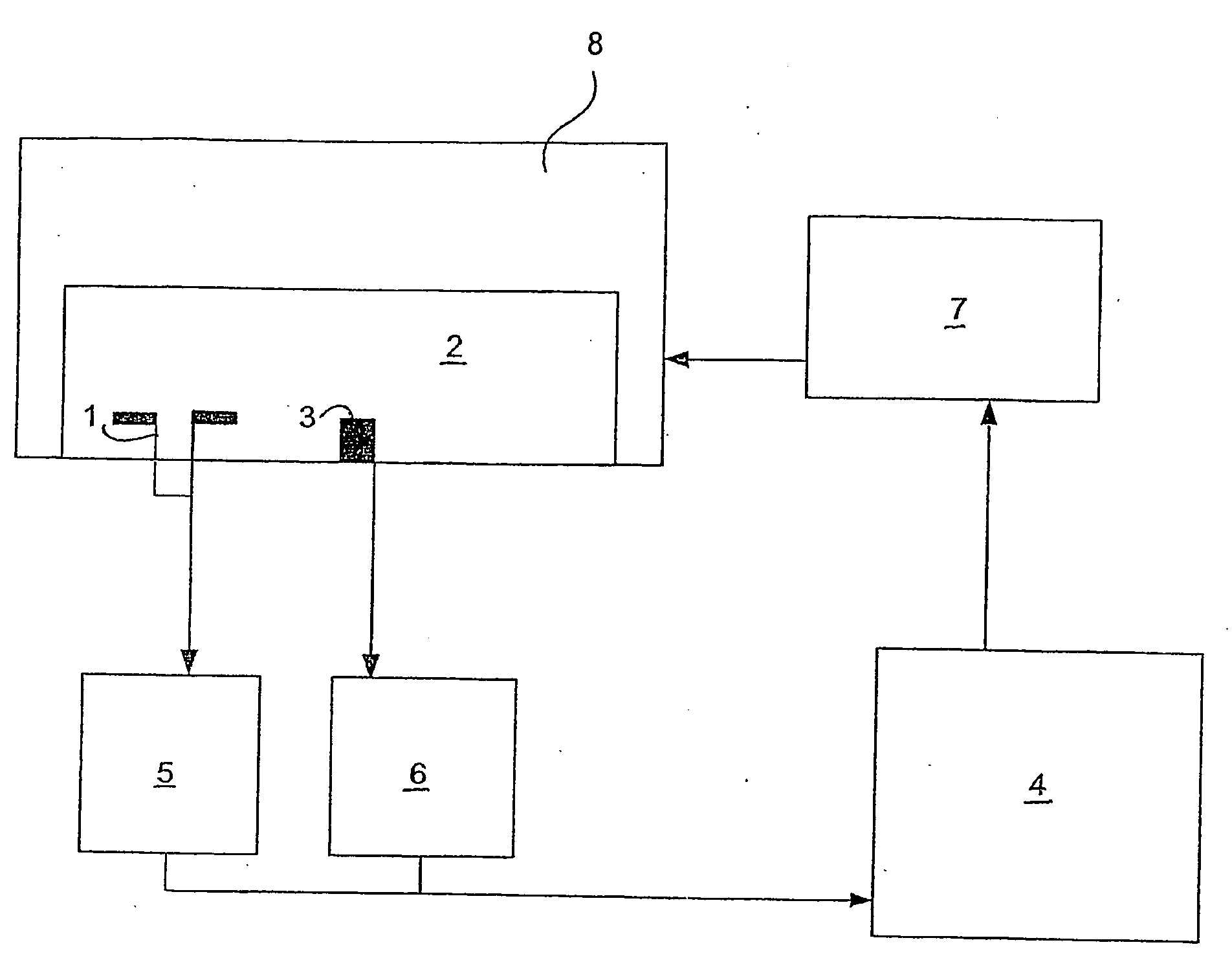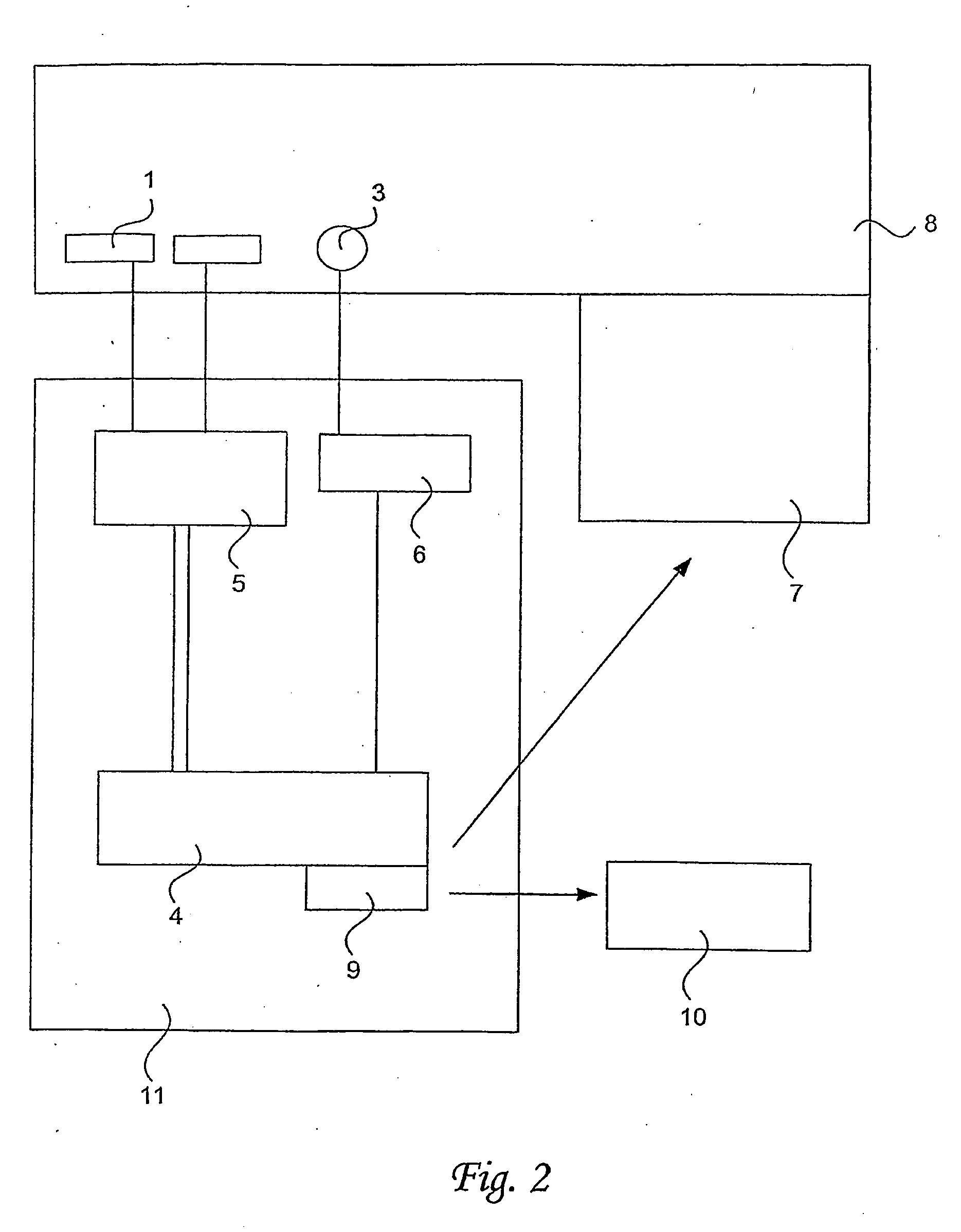Method for the determination of the stresses occurring in wood when drying
a technology of stress and determination method, which is applied in the direction of material analysis using acoustic emission techniques, material solid analysis using sonic/ultrasonic/infrasonic waves, etc., can solve problems such as uncontrollable propagate and macro cracks, and achieve greater accuracy and high quality , the effect of determining the stress appearing in wood
- Summary
- Abstract
- Description
- Claims
- Application Information
AI Technical Summary
Benefits of technology
Problems solved by technology
Method used
Image
Examples
example 2
Application of Multiple Variable Methods
[0031]In this example of an embodiment of the invention, the method is similar to example 1 or examples 3 through 16, with reference made to FIG. 2, except that the method used for analyzing the measurements is the multiple variable method. The multiple variable method may, for example, involve the use of multiple variable regression, principal component regression (PCR) or partial least squares (PLS). By making measurements on the calibration samples, it is possible to formulate a multiple variable matrix that shows, in separate columns, the actual stress field measured from each calibration sample as well as the values for the specified IS and AE parameters. The stress state generated in the process can be determined by means of a standard destructive test method at the various stages of drying. By using one of said multiple variable methods, the error between the stress function application and the actual stress can be minimized. This yield...
example 3
Monitoring Method
[0032]In this example of an embodiment of the invention, the method is similar to examples 1 and 2 or examples 4 through 16, with reference made to FIG. 2, except that in this application the link to the drying control system is lacking. Thus, the method, as presented in this example, only serves the purpose of monitoring the drying process and outputting measurement and stress readings to the monitoring device. This application may be used, for instance, when the drying rate is to be optimized, the drying process is to be monitored or the optimum drying of wood species other than those already calibrated is to be studied.
example 4
Control Method
[0033]In this example of an embodiment of the invention, the method is similar to examples 1 through 3 or examples 5 through 16, with reference made to FIG. 2, except that no monitoring system is provided in this application. As a result, the method only serves the purpose of controlling drying. However, this embodiment of the invention can be used for routine drying or when the drying rate is not critical and the quality of the wood is to be optimized, instead.
PUM
| Property | Measurement | Unit |
|---|---|---|
| diameter | aaaaa | aaaaa |
| distance | aaaaa | aaaaa |
| frequency | aaaaa | aaaaa |
Abstract
Description
Claims
Application Information
 Login to View More
Login to View More - R&D
- Intellectual Property
- Life Sciences
- Materials
- Tech Scout
- Unparalleled Data Quality
- Higher Quality Content
- 60% Fewer Hallucinations
Browse by: Latest US Patents, China's latest patents, Technical Efficacy Thesaurus, Application Domain, Technology Topic, Popular Technical Reports.
© 2025 PatSnap. All rights reserved.Legal|Privacy policy|Modern Slavery Act Transparency Statement|Sitemap|About US| Contact US: help@patsnap.com



